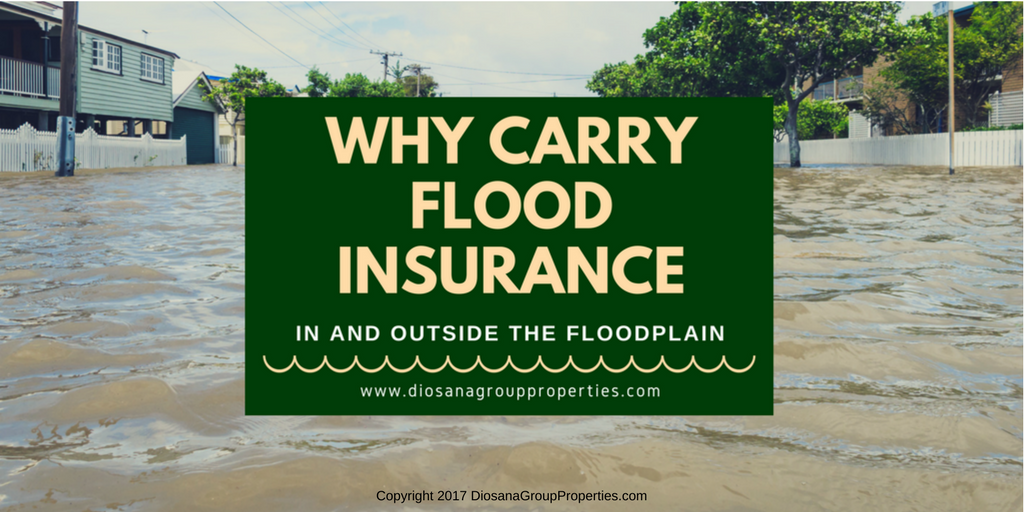Why Carry Flood Insurance

Houston homeowners battered by Hurricane Harvey have a long road to recovery ahead. Neighborhoods marked safe on government maps went underwater. Hurricane Harvey taught a valuable lesson about the floodplain: it’s everywhere. Anywhere is subject to flooding; the concerns are how often the area will flood, and how much. For Houston, it is time to rebuild, yet preparing for the future must be part of that process. Houston homeowner’s inside the mapped floodplain and out can protect their homes with flood insurance. Flood insurance policies are available for nearly any homeowner, covering flood damages beyond those in a homeowner’s policy.
The World is a Floodplain
Harvey shocked the nation, drowning Harris County with near-record rainfall. The many hardships Houstonians underwent tested the entire city. Whole neighborhoods become functional waterways, and thousands of homeowners lost almost everything. Many returned to ruin, yet the worst news was yet to come: most homeowner’s insurance policies exclude flood damage.
The concept of a floodplain is, well, a myth. Yes, certain areas are prone to flooding more than others and annual floods occur, yet major floods can happen anywhere at anytime. Homeowner’s in the mapped floodplain may be obligated to carry flood insurance per mortgage agreements, but flood insurance policies are available for nearly any homeowner. According to Don Griffen with the Property Casualty Insurers Association of America, nearly 1/4 flood insurance claims each year originates from beyond the mapped floodplain.
The deliberate flooding of Houston is a painful topic many homeowners paid dearly for. Homes in Memorial and the Energy Corridor suffered unexpected flooding at the hands of the city. Homes which may have otherwise escaped hurricane damage went underwater almost immediately. Locals unprotected by flood insurance are left footing the bill for incredible damages, personal losses, and mold remediation. With an average price under $700.00 annually, flood insurance may be the less-expensive option for the future.
Flood Insurance: The Details
Flood insurance protection is available through a local agent and online. The government operates a referral program extending basic coverage for affordable rates as well. Generally speaking, homeowner’s insurance policies leave gaps for flood and earthquake protection. Cleanup following a flood can be expensive, and in some cases crippling. Compare options to find the right flood insurance policy.
National Flood Insurance Program. Protection through the government flood insurance referral program caps at $250,000 for structural damages, and $100,000 for personal possessions.
Private Flood Insurance Protection. Flood insurance through a private carrier typically includes coverage similar to the National program.
Excess Flood Insurance. Excess flood insurance is a combination of regular and extra flood insurance protection. For homeowners with structures and possessions with values above those protected by standard plans, excess flood insurance is extra coverage included on top of an existing policy.
Plan ahead. Flood insurance policies have a thirty-day period before taking effect. This means that by the time a storm is headed to town, it’s too late to start a new policy. Flood insurance coverage extends to structural damage, personal possessions, and essential living equipment.
Keep an Emergency Fund
A flood savings account can help overcome any extra expenses following a flood. With all the added protection, payouts for flood insurance still include several exclusions. Under both federal and private flood insurance policies, the following expenses fall on the homeowner after a flood:
- Temporary living expenses while repairs are completed
- Non-essential equipment such as carpeting, wall and window treatments, and other decorative additions.
- TVs, audio equipment, and other electronics
- Personal equipment stored in basements or crawlspaces
- Bookcases and other non-structural additions
Before this year’s hurricane season, consulting firm Aon estimated a whopping 85% of Harris County homeowners lacked any type of flood insurance protection. The average national flood claim reaches $30,000 per home; many Houstonians will spend much more than that recovering from the effects of Hurricane Harvey.
Plan and Prepare for Hurricanes and Flooding
The damage from Harvey is already done, and the long process for recovery is underway. For now, Houston and the rest of Harris County have a city to clear, and the future to prepare for. Hurricanes are a natural part of living on the Gulf Coast. It’s only a matter of time before another serious hurricane strikes.
The chances of floodwaters returning are high for homeowners across the county, in the floodplain and beyond. Flood insurance through the national program or a private broker can protect your pocketbook from nature’s fury. Plan for the future; protect your investment with flood insurance protection.
I love helping people find homes. If you’re thinking of buying or selling a home in Houston, let’s talk! I always have time to answer questions. Let’s explore Houston together – call the Diosana Group anytime at 713-965-4338.

